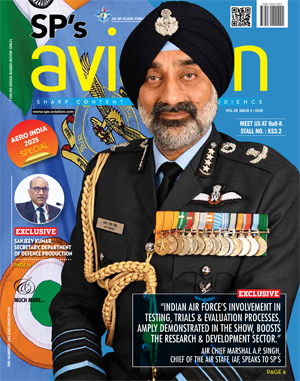INDIAN ARMED FORCES CHIEFS ON OUR RELENTLESS AND FOCUSED PUBLISHING EFFORTS
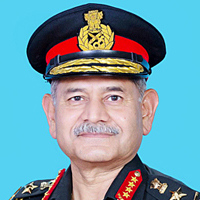
The insightful articles, inspiring narrations and analytical perspectives presented by the Editorial Team, establish an alluring connect with the reader. My compliments and best wishes to SP Guide Publications.

"Over the past 60 years, the growth of SP Guide Publications has mirrored the rising stature of Indian Navy. Its well-researched and informative magazines on Defence and Aerospace sector have served to shape an educated opinion of our military personnel, policy makers and the public alike. I wish SP's Publication team continued success, fair winds and following seas in all future endeavour!"

Since, its inception in 1964, SP Guide Publications has consistently demonstrated commitment to high-quality journalism in the aerospace and defence sectors, earning a well-deserved reputation as Asia's largest media house in this domain. I wish SP Guide Publications continued success in its pursuit of excellence.
Indian Aerospace Industry at an Inflection Point
Aero India 2025 is a golden opportunity for all stakeholders, from policymakers to DRDO, PSUs and private industry, to come together and showcase their commitment to not only make India Atmanirbhar in Aerospace but also be a reliable and capable exporter of aerospace products
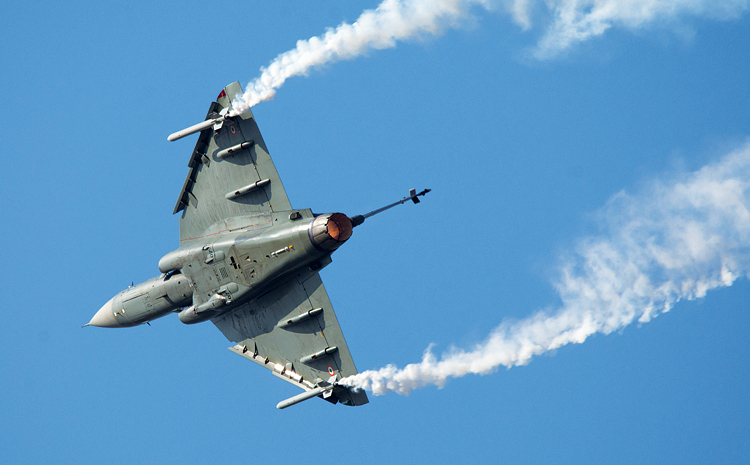
The nation is gearing up for the 15th edition of Aero India, the biennial air show held at Bengaluru. It is also amongst the largest air shows in Asia. From its humble beginnings in 1996 when 22 countries participated and 65 aircraft were on display, the air show has gained tremendous popularity. Aero India 2023 attracted 809 exhibitors from over 100 countries and this edition is expected to surpass these numbers. India’s aerospace sector is undeniably at an inflection point-rapidly evolving through advancements in technology, strategic collaborations, and an increasingly robust domestic manufacturing ecosystem. India from traditionally being the leading arms importers in the world for many years is now placed among the top 25 exporters of arms in the world, thanks to the growth in domestic defence industry.
Beginning with participation of only the IAF aircraft in the first Aero India, this edition will witness participation of air arms of all three services. Aerospace power has been the primary tool of national power since World War II, this is highlighted by the growing air arms of both, Army and Navy. Add to this attractive market is the tremendous growth in civil aviation in the country. The commercial airlines presently operate around 822 aircraft, this number is likely to go up to 3,800 in next 20 years.
Major events planned during the air show are, Defence Minister’s conclave, CEO’s roundtable and events by the Indian Air Force, Indian Navy and Indian Army. Bilateral meetings are planned for the Defence Minister, Chief of Defence Staff, Chiefs of the IAF, IN and IA with their counterparts. Bilateral meetings are also likely between Leadership in MoD, DRDO, PSUs, Private industry with their counterparts from participating nations. This would be an ideal platform to signal the nation’s intent to the world that Indian aerospace sector is inclusive and ready to collaborate and produce quality products for the world market.
IAF is presently deficient of 12 fighter squadrons, Navy is looking for carrier-based fighter aircraft and hundreds of helicopters are required for the three services. Indian Multi Role Helicopter (IMRH) and Medium Transport Aircraft (MTA) are two important projects. Additionally, thousands of UAVs along with diverse weapon systems for both fighters, helicopters and UAVs will be required in coming years. This is a lucrative market which is ready to take off. The slogan for the Aero India was chosen in 2019, “The Runway to a Billion Opportunities”, perfectly fits the expected outcomes for the present edition.
Air Chief Marshal A.P. Singh, Chief of the Air Staff, IAF during a recent seminar stated that it took Tejas 17 years to fly after the project was conceived in 1984, thereafter induction started 15 years later and all 40 aircraft have still not been delivered to the IAF. This is a golden opportunity to showcase the progress made in LCA Mk2 and display of LCA Mk1A. It is extremely important to assure the world that Indian aerospace products are reliable, competitive and produced to strict timelines.
The present Indian contribution to the global aerospace sector is miniscule; however, the rapid growth witnessed by this sector enthuses confidence that the Indian aerospace industry is now poised for a giant leap in garnering growing share of this lucrative market
Defence Minister has declared year 2025 as the “Year of Reforms”. The timing of hosting Aero India is coinciding well with this theme. Initial thoughts about the way forward in refining acquisition procedures, capability development vision, technology transfer expectations, public-private partnership roadmap and collaboration with international OEMs are likely to be discussed during business meetings. This should inspire confidence and create a favourable investment and technology transfer environment. As per last available reports more than 700 exhibitors, including more than 140 exhibitors from foreign countries have registered for the air show.
TRANSFORMATION OF AEROSPACE INDUSTRY
Indian aerospace sector has made remarkable progress over the last one decade since the adoption of ‘Make in India’ and Atmanirbhar Bharat. This transformation is visible in military, civil and space sectors. Government approval of Venture Capital of ₹1,000 crores in space sector has provided the much-needed impetus since, space will be highly congested and contested in the future. Innovation in technologies both in aerospace sector are imperative for the nation.
Private industry is developing and producing world class weapons along with DRDO. Liberalisation of policy on certification and export would help the private industry. Additionally, major international players should be allowed to tie up with Indian industry in developing and producing weapons for the domestic and international market. News of MBDA tying up with L&T on Meteor Air to Air missile is encouraging. This will provide diverse options and assist faster development of weapons for air to air and air to ground roles. Joint ventures have provided the private industry the launchpad for further growth and development.
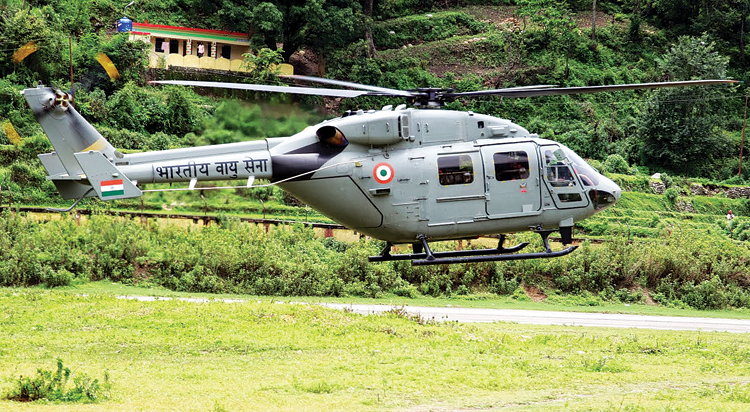
The impetus provided to private industry and growth of industry partners in Tier 2 and Tier 3 cities has created a vibrant ecosystem. The Indian aerospace industry has witnessed a growth of almost 20 per cent since 2004. India’s domestic defence production was valued at ₹1.27 lakh crores in 2024, an increase of 16.7 per cent over 2023. More than 14,000 MSMEs and 350 startups are presently engaged in defence production. Even after delayed entry the private industry contribution stands at 21 per cent which is no mean an achievement. The time has come to now catapult from manufacturing small components and products at lower level of technology to producing modern systems and platforms.
KEY TRENDS
There is clear indication that the aerospace industry in India is fast approaching its inflection point.
- Growth in Domestic Aerospace Manufacturing: All major PSUs like HAL, BEL, BDL have enhanced their manufacturing capacities as more systems are indigenised. Private manufacturers like L&T, Mahindra Aerospace, Adani Defence & Aerospace, Tata Advanced Systems Limited, Reliance Defence and Bharat Forge have started manufacturing complex systems and weapons developed by DRDO or through JVs. LCA Mk1/1A and Mk2, Light Combat Helicopter (LCH), Light Utility Helicopter (LUH), Akash Air Defence Systems and myriad types of radars and electronic systems are examples of enhanced capability and capacity. These companies are also working on critical technologies like Combat Air Teaming System, AI and Drones.
Indian MSMEs have demonstrated their capability to manufacture components to global standards. The capacity of these units has also grown, and it provides a cost-effective quality product. Today, production of aerospace products is reliant on global supply chains. This gives our MSMEs a fair chance to compete. - Policy and Strategic Initiatives by the Government: The government has taken many steps like releasing the National aerospace policy (2021), liberalisation of FDI in defence, Space policy (2020), Drone policy (2021). Establishment of defence industrial corridors in various states and incentives for setting up aerospace industry combined with improvements in infrastructure and review of procedures is driving the growth of this ecosystem. Increasing exports and consumption in domestic markets has spurred competition. Government impetus to private sector participation will further encourage competition. Many private players have started selling drones and weapons to armed forces and are also exporting these.
- Technological Evolution and Innovation: Developments and innovations in areas like Artificial Intelligence (AI), Cloud and quantum computing, robotics, big data analytics, autonomous systems, composite materials, avionics and electronic warfare systems are being undertaken by both DRDO, PSUs and private industry. While the nation is at a nascent stage in many of these technologies primarily because of our dependence on semi-conductors, these areas will define the trajectory of Indian aerospace industry. Startups in space sector have rapidly grown and are ready to provide cost effective and efficient solutions in satellite manufacturing and ISR.
- Growth of Civil Aviation: India has a rapidly growing commercial and private aviation market. UDAN scheme has resulted in tremendous growth of airports in tier 2 and 3 cities thus providing air connectivity. According to report by Deloitte, India is seventh largest civil aviation market in the world. More than 1,000 aircraft are under order. About 200 to 300 aircraft will have to undergo major maintenance checks every year. Presently, 90 per cent of Maintenance Repair and Overhaul (MRO) requirements are being met through imports. The nation can save more than $2.0 billion every year, and provide thousands of jobs by setting up MRO facilities in India. The MRO industry was worth $1.7 billion in 2021 and is expected to become worth $4.0 billion by 2031 growing at an impressive CAGR of 8.9 per cent against a global average of 5.6 per cent.
- Collaborations and Partnerships: Entry of international majors in Indian aerospace market through JVs has provided a fillip to domestic manufacturing even though it is to a design provided by the OEM. The next phase would be R&D as these companies get orders. BrahMos, Boeing-HAL, HAL-Safran, Tata-Airbus, Tata-Boeing, Adani-Thales and Elbit, Mahindra-Embraer, Reliance-Dassault, BEL-Israel Aerospace Industries (IAI) are some examples of successful JVs. These JVs should ultimately lead to joint development and production.
India from traditionally being the leading arms importers in the world for many years is now placed among the top 25 exporters of arms in the world, thanks to the growth in domestic defence industry
EXPECTATIONS FROM AERO INDIA 2025
The growth in aerospace sector and increasing domestic and export markets raise expectations from this edition of Aero India. The strategic partnerships, innovations, growth of MSMEs and private industry along with rising defence requirements of India and the world have placed Indian aerospace industry at an inflection point, from where favourable climate will spur growth and make the nation truly Atmanirbhar in aerospace sector.
It is an opportunity to attract FDI in aerospace sector, something which has not taken off so far. There also exists an opportunity to communicate the resolve that the government is committed to supporting private industry and MSMEs. Discussions could also be taken forward with international majors on collaboration in aero engine technology and other critical systems where our technological capability is nascent.
This Aero India is an opportunity for the MSMEs and startups to display their innovations and create business opportunities with international aerospace companies. Indian domestic industry can achieve self-sustenance by leveraging the business opportunities offered by international majors. Aerospace market is facing increasing competition, Indian industries with their low cost can attract larger share of international business through joint ventures.
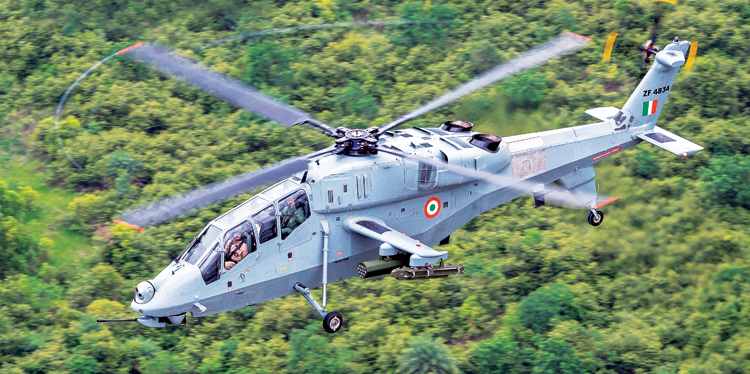
HAL has done reasonably well in helicopters and BEL along with private industry is expanding in radars and electronic systems. HAL is developing IMRH, this could be an opportunity for India to invite another country with a similar requirement in development and production. This will enhance future possibility of export to other countries. Also, HAL has good experience and capability in producing and overhauling aircraft of myriad origins, it could provide a viable and economical major overhauling option for common fleets in Asia and Africa region by entering into a MoU with OEMs.
Drones are now ubiquitous in their employment. Drone industry is witnessing a technological revolution. There has been tremendous growth in this sector and many Indian companies have made their mark in this domain. The global drone market was worth $31.02 billion in 2024 and is expected to become $87.5 billion by 2033, with an expected growth rate of more than 10 per cent. Indian drone market is expected to grow from $654 million in 2024 to $1,437 million by 2029, at a CAGR of 17.0 per cent. The total requirement of drones in India is likely to reach 62,000 pieces by 2029. This is a huge lucrative market. The drone industry can leverage the Aero India platform to showcase their products which meet armed forces and commercial requirements. DJI of China is the major supplier of drones in India, this market could be captured by domestic industry by developing competitive products. A separate slot for drone demonstrations could be sanctioned during the show. Indian companies should use this opportunity to tie up joint ventures with international companies to provide cheaper MALE and HALE drones.
Simulation plays a critical role in aviation training. The quality of simulators has improved exponentially. Indian manufacturers have demonstrated their capabilities to produce modern simulators. As the cost of flying rises further and complexity of aircraft evolves simulators will gain importance. This is another area in which domestic industry could collaborate with international partners to provide global solutions.
Aero India 2025 would be an ideal platform to signal the nation’s intent to the world that Indian aerospace sector is inclusive and ready to collaborate and produce quality products for the world market
The space sector is rapidly expanding. Companies and startups in this sector have grown manifold and hold tremendous promise. This could be leveraged in Defence Minister’s conclave, other events and bilateral meetings. The sector has government’s blessings in form of a ₹1,000 crore venture capital. The global market for Intelligence Surveillance and Reconnaissance (ISR) products was about $42 billion in 2024 and is likely to grow at CAGR of 5.6 per cent to $71.2 billion by 2034. India with its cost-effective solutions is ideally positioned to make its mark in this sector.
Aero India will bring together major industry partners and OEMs who could discuss setting up MRO facilities for commercial and military aircraft in India.
Hosting Aero India this year can’t be timelier for the government, DRDO, PSUs and private industry as it brings diverse players from across the globe on a single platform. Asian, Latin American and African countries have growing requirements for aerospace products with applications in civil and military sectors. HAL has produced enough two-seater versions of LCA Mk1. This is an ideal opportunity for us to take selected visitors from friendly foreign nations for familiarisation sortie on the Tejas during the show. Similarly, the HTT-40, LCH and LUH must be utilised in our outreach programme.
The present Indian contribution to the global aerospace sector is miniscule. The rapid growth witnessed by this sector enthuses confidence that the Indian aerospace industry is now poised for a giant leap in garnering growing share of this lucrative market. Assurance by the government on this platform of higher allocation for R&D to DRDO and private industry will accelerate technological growth which will provide a platform for our industry to compete globally.
The government must vigorously pursue exporting LCA Mk1A with domestic radar and avionics, Light Combat Helicopter, Light Utility Helicopter, Akash and Medium Range Air Defence Systems, Drones, BrahMos Surface to Surface missile system, Small satellites and imagery, Air to Ground weapons, Astra Air to Air missile, Counter drone systems and variety of radars manufactured both by BEL and private companies, etc. India has rapidly moved up in export rankings and presently is in top 25 arms exporting nations. Aero India 2025 is taking place at a time when the Indian aerospace industry is at its inflection point not only make India truly atmanibhar but also provide modern aerospace products to the world.
CONCLUSION
Indian aerospace industry is at a defining juncture. Aero India 2025 is a golden opportunity for all stake holders, from policy makers to DRDO, PSUs and private industry to come together and showcase their commitment to not only make India Atmanirbhar in aerospace but also be a reliable and capable exporter of aerospace products. This event should become the platform for next phase of growth in aerospace sector and our vision of aerospace industry in coming decades. The success of Aero India would be measured by the number of MoUs, contracts and JVs signed by companies and PSUs within and outside the country. All efforts must be made for this edition to become the harbinger of India becoming a preferred exporter of aerospace products to the world.
The author retired as Air Officer Commanding-in Chief of Central Air Command, Indian Air Force on August 31, 2024.





